Fred Smith’s Wisconsin Concrete Park, the fabulous art environment in Phillips, Wisconsin, circa 1997 and 2007. There is plenty to be said about Smith and his creations. For more information, visit its Spaces archive page or the Friends of Fred Smith site. Back to Wisconsin: The Roadside Genius State.
Continue readingCategory: Vernacular Art
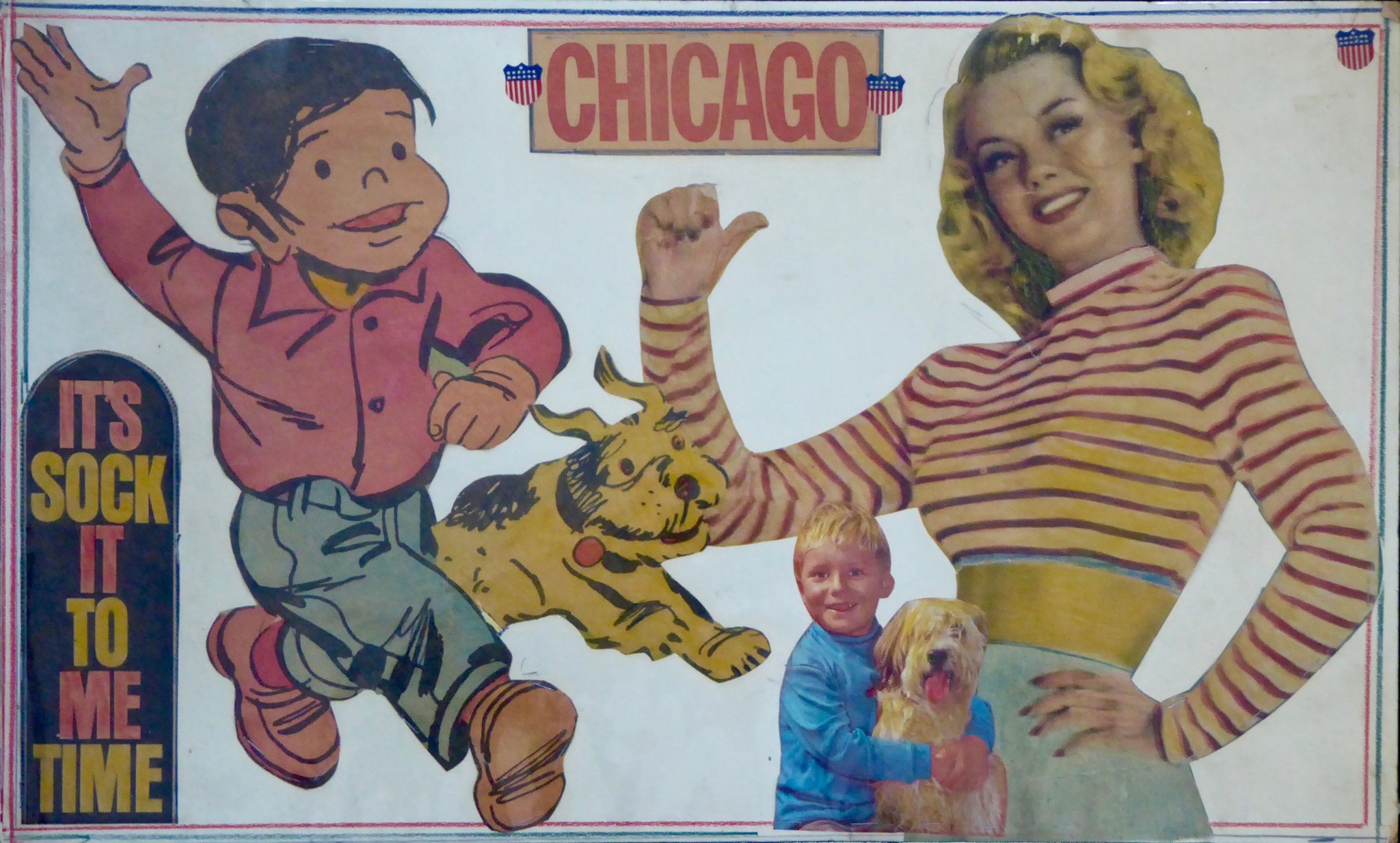
Outsider Art: Chicago We Own It
A look past Chicago’s outsider art canon to anonymous & lesser-known artists, the collectors who found their work, and Maxwell Street, where many learned how
Continue reading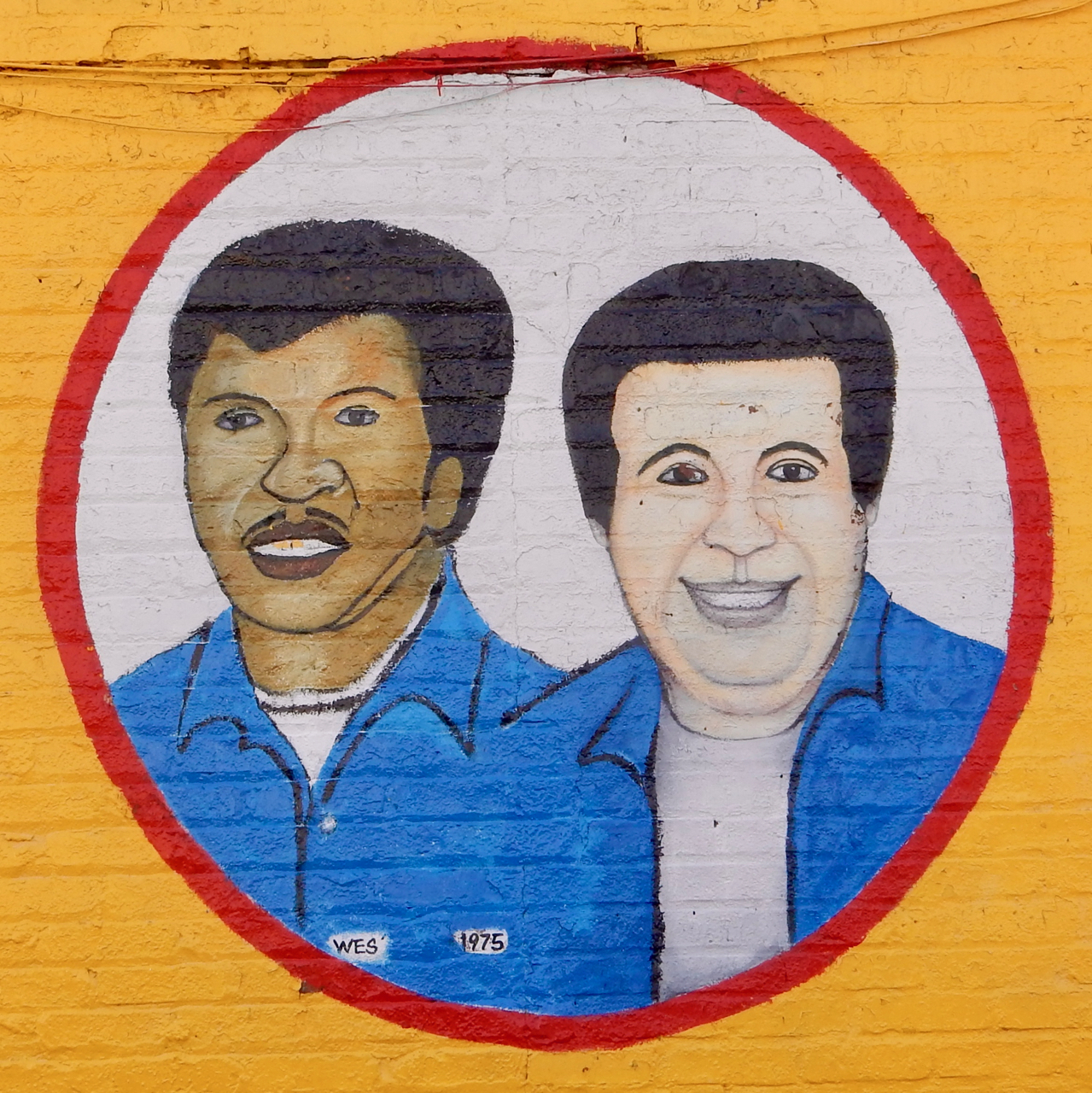
Auto Parts Art Gallery, and Vicinity
Frank’s West Side Auto Parts, at Kedzie Avenue and 30th Street, is an art gallery unto itself. Plus, there are other great signs in its vicinity, including more auto parts art and other examples of vernacular creativity.
Continue reading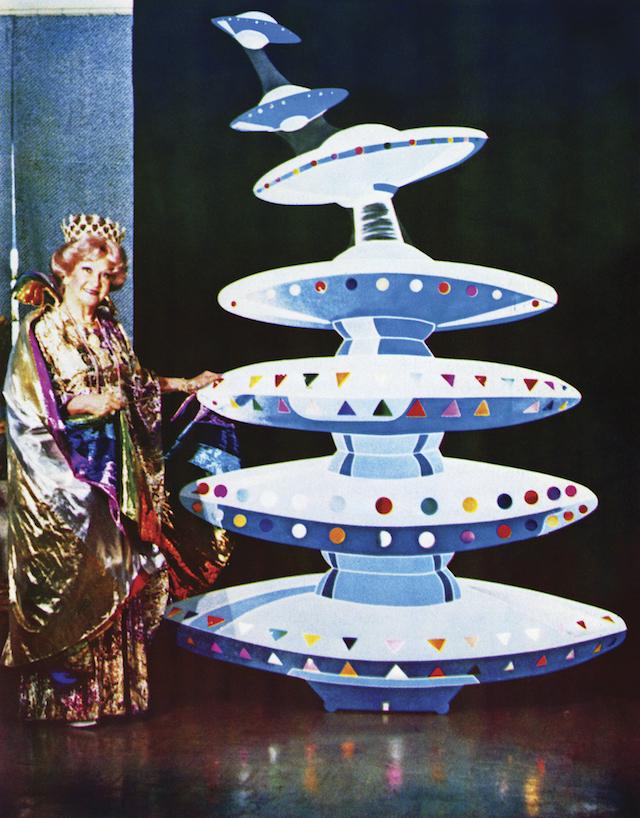
Review — Jim Shaw: The Hidden World
Jim Shaw: The Hidden World, edited by Marc-Olivier Wahler. Koenig Books, London, 512 pages, 2014. ISBN: 978-3863355845. Hardcover. Jim Shaw’s collection of religious, political and cultural ephemera, published in 2014 as an exhibition catalog, makes for a great book, especially if your collecting interests align with Shaw’s, as mine not coincidentally do.
Continue reading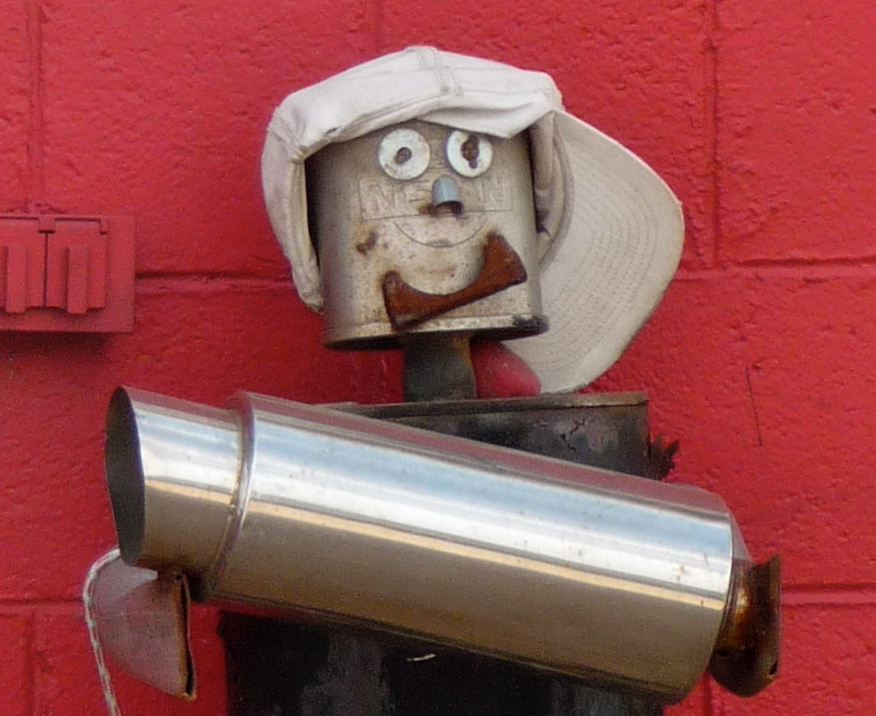
A Denver Roadside Art Gallery: Creativity Abundant
Denver streets were lined with some real beauties when these pictures of roadside art were taken earlier in the decade. Also two nice places from Colorado Springs. Whether in muffler men or murals, vernacular creativity abounds.
Continue reading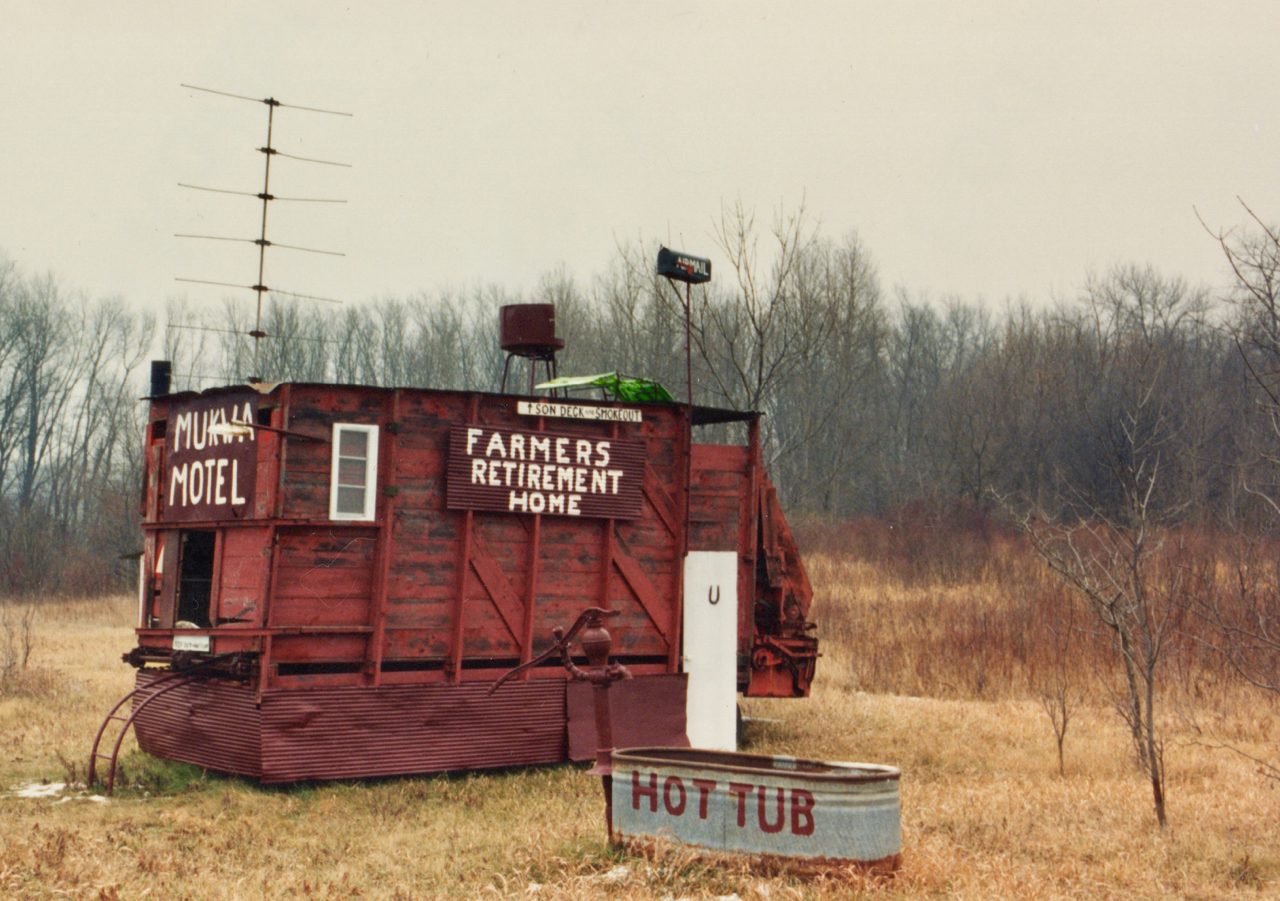
Mukwa Motel Vernacular Environment
The Mukwa Motel/Farmers Retirement Home is a vernacular art environment on Wisconsin Highway 54 west of New London. It’s on the northern edge of the Mukwa State Wildlife Area and was photographed before 1995. An artful bit of rural humor built by farmer John Kraske shortly before his retirement. According to the Post-Crescent newspaper, he assembled the site in 1991, two years before he retired from farming. Kraske, who died at 96 in 2016, told the paper in 2001, “It’s just something some crazy farmer did who didn’t have anything better to do with his time.” “Every year or so
Continue reading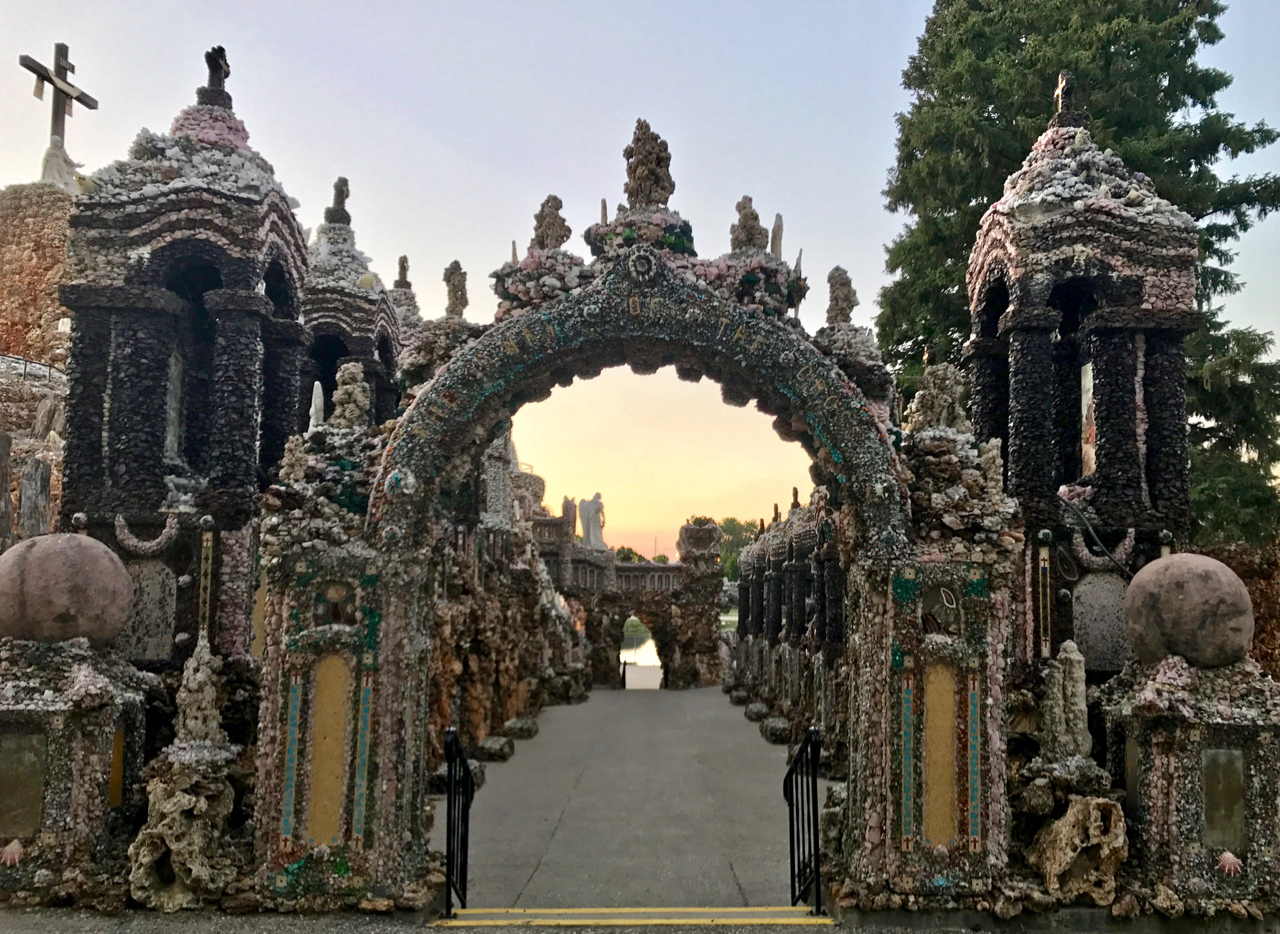
Grotto of the Redemption — Redemptive Greatness
Father Paul Dobberstein’s Grotto of the Redemption in West Bend, Iowa, is on the way to nowhere, but the right way to go: It’s one of the most spectacular places in the world. Dobberstein was a parish priest with a vision, and the decades he spent fulfilling that vision paid off. For that we should be grateful not only to Dobberstein, but to the parishioners who tolerated and supported his obsession, which in turn helped spark similarly over-the-top constructions all over the upper Midwest. The grotto includes a number of mini-grottos and fountains as well as an avenue lined with
Continue reading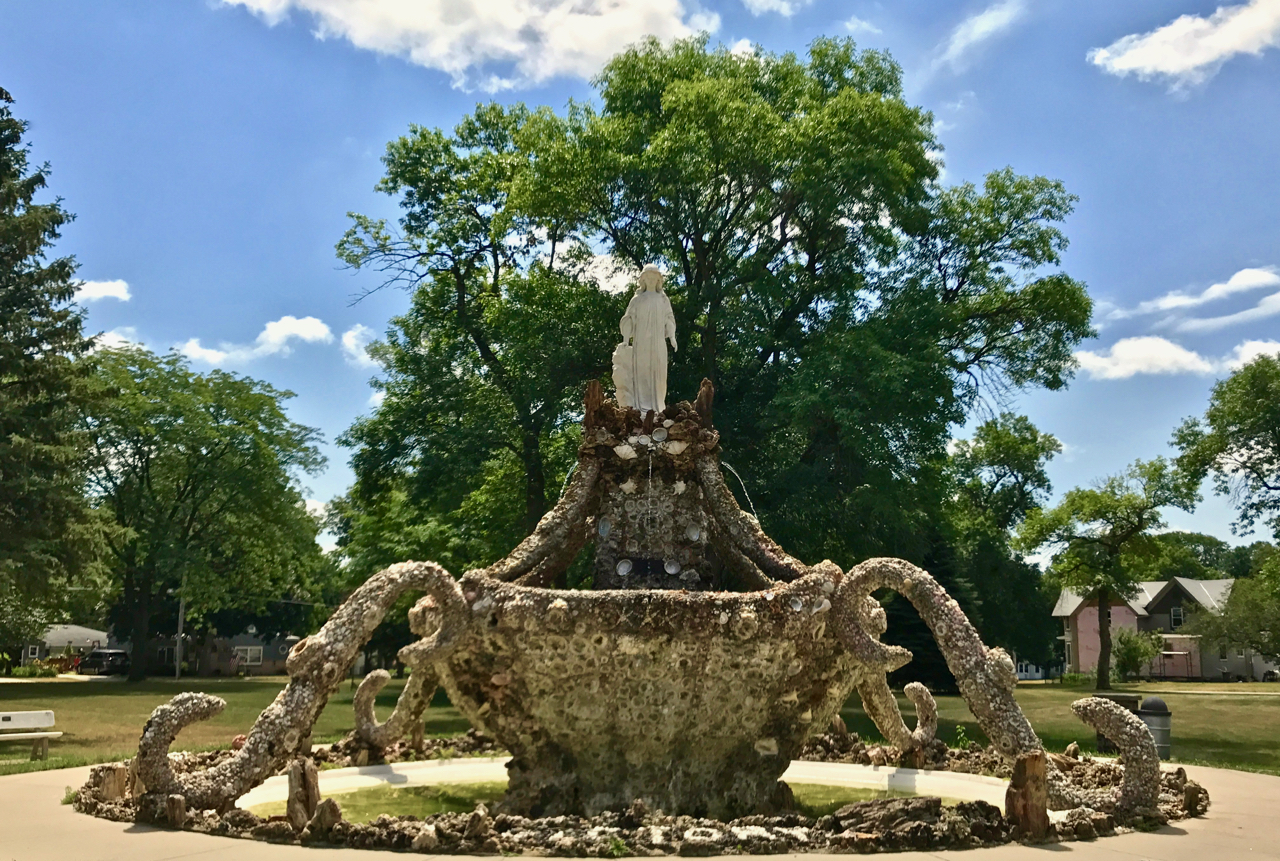
Fay’s Fountain — Vernacular in the Park
Another Iowa vernacular masterpiece built by Father Paul Dobberstein, creator of the Grotto of the Redemption. Dobberstein was commissioned to built this memorial, officially called the Liberty Fountain, in honor of Fay Hessian, a young girl who died from tuberculosis in 1912. The fountain was dedicated in 1918 and restored in 2011. It sits in a park in Humboldt, Iowa, with organic shapes and encrustations that make it unlike any city park fountain I’ve ever seen. Back to the Grotto of the Redemption
Continue reading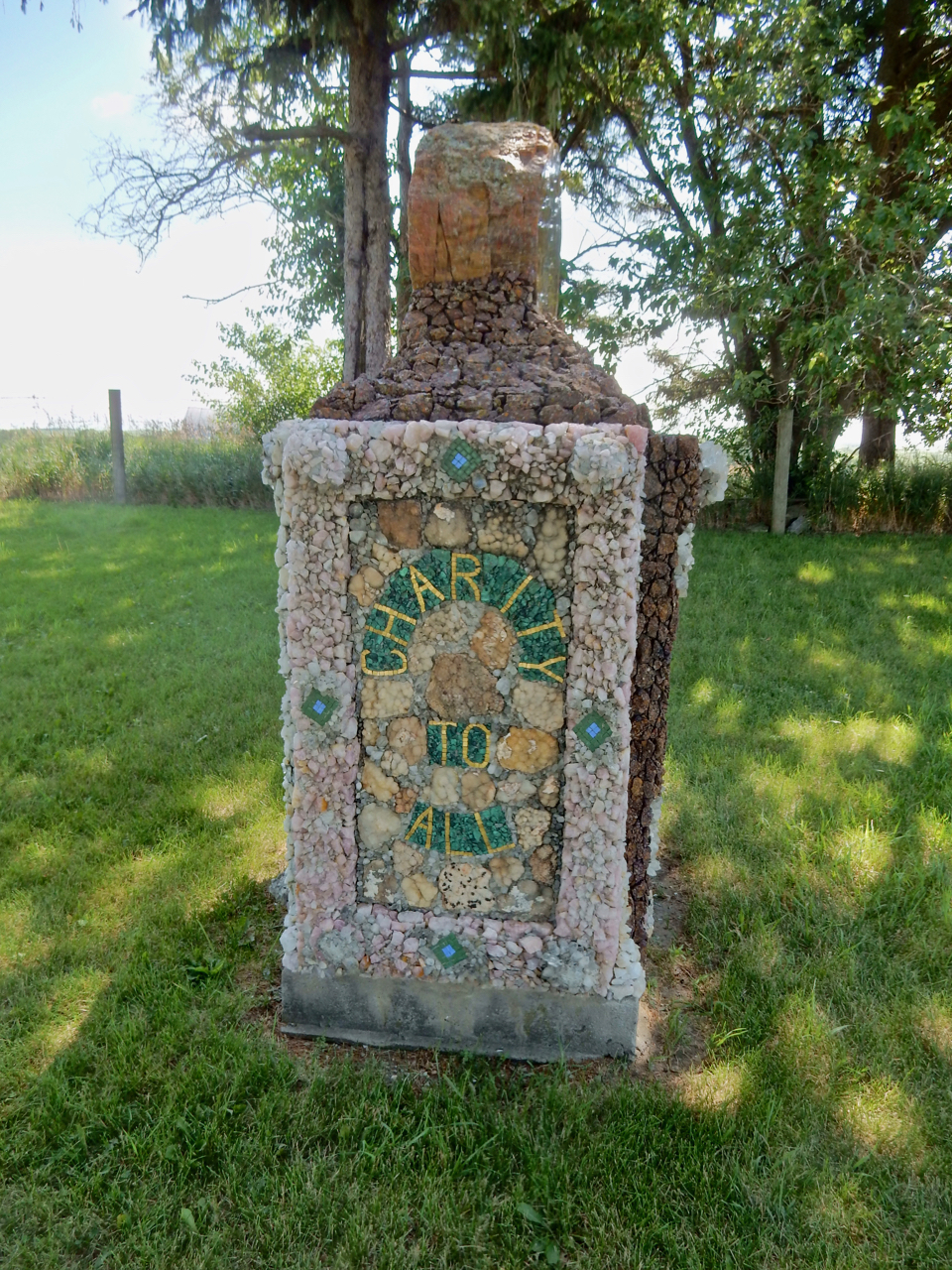
Dobberstein’s War Memorial: Charity To All
If Paul Dobberstein’s Grotto of the Redemption is out of the way, his War Memorial is nearly inaccessible. You have to follow gravel roads to what used to be the site of a town called Rolfe to find this modest structure sitting in the middle of a small grassy field. Back to the Grotto of the Redemption
Continue reading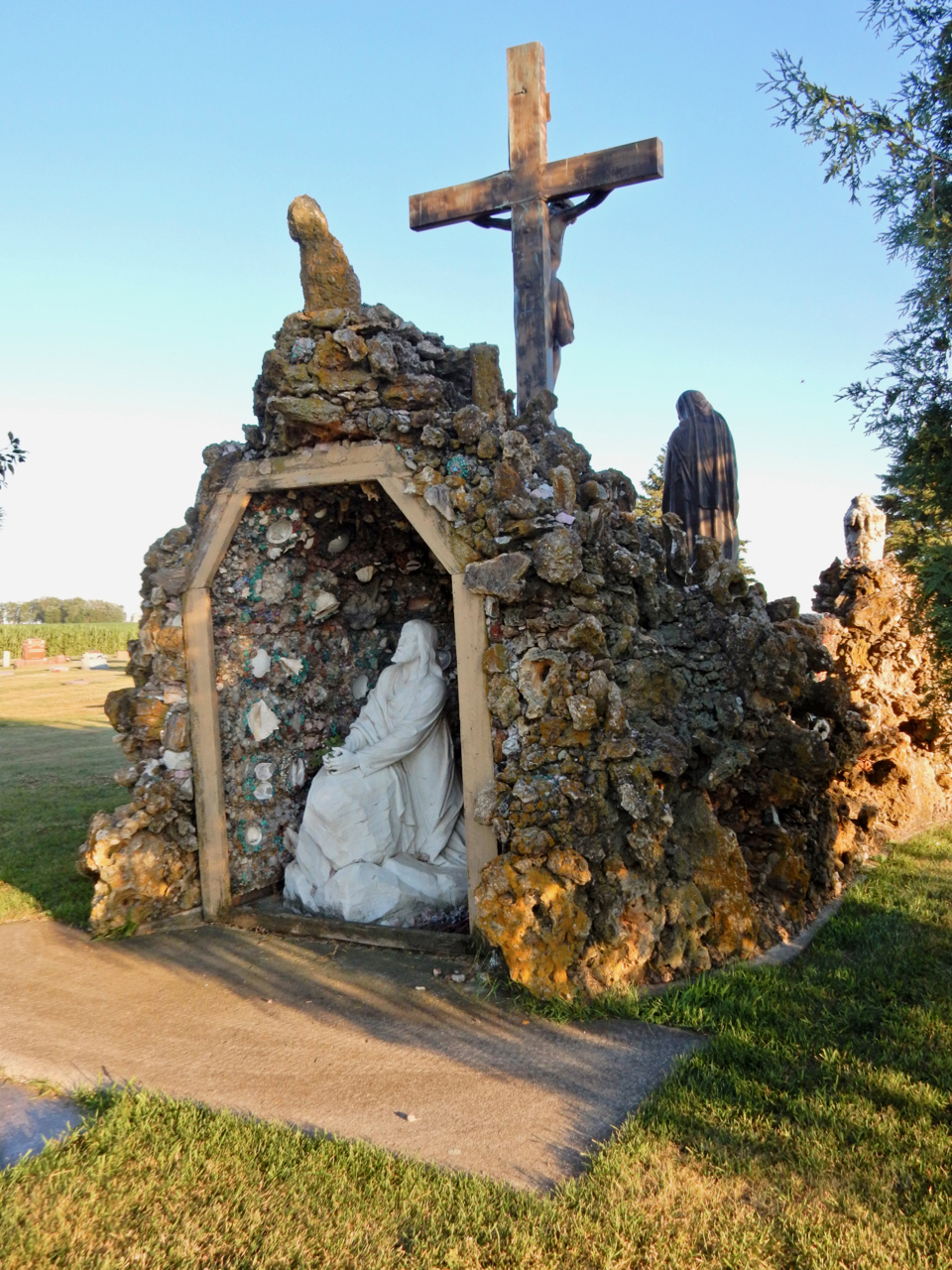
The Crucifixion Group: More Grotto Greatness
In an out-of-the-way cemetery in Wesley, Iowa, you can find Father Paul Dobberstein’s Crucifixion Group, a mini-grotto unto itself. It’s another example of the decorative impulse filling every available space with something that looks cool. And like the big grotto a few towns away, it provides an effective setting for the underlying religious message. Back to the Grotto of the Redemption
Continue reading